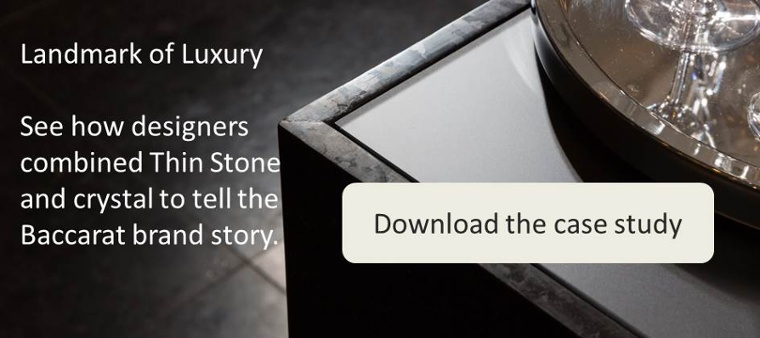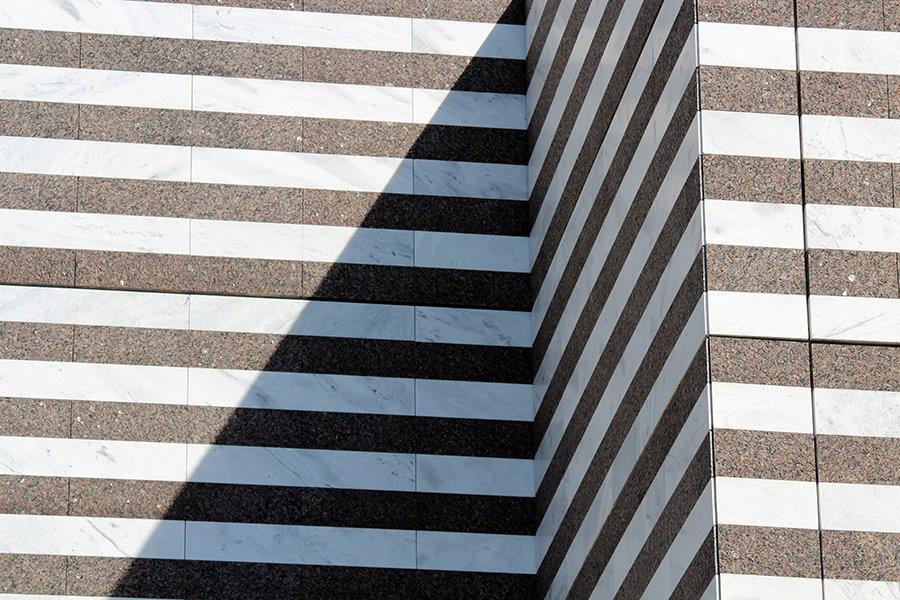
One of our favorite uses of stone at Polycor is in installations where historic meets modern with a mix of materials for a dynamic experience.
At the Cleveland Museum of Art in Ohio an ambitious $350 million project expanded and rejuvenated the institution from an unrelated collection of additions into a welcoming public space with glass, American marble and granite that mixes styles, eras and points of view.
At the museum that features Corinthian columns and large blocks of White Georgia marble, architect Rafael Viñoly created a soaring glass atrium to join two new wings, replacing more recent additions. The project included renovation of both the original 1916 beaux-arts building and Marcel Breuer's modernist 1971 addition. "Viñoly’s concept for the museum’s expansion and renovation was to add new East and West wings that would clasp the 1916 building as if it were a jewel, according to writer William Neff of the Plain Dealer.
The modern addition to the original neoclassical architecture of the museum factored in the blending of old and new materials. Matching stone from the same quarry as the existing building allowed for a seamless appearance. The team added Newton Brown granite from our Quebec quarry to the White Cherokee marble in a surprising and striking striped pattern that moves the eye along the East Wing of the museum.
According to the museum, while redesigning the museum campus, Viñoly said that the goal was "to elevate the level of architectural display to the level of the art in this great museum.'"
At the center of the grand project that finished in 2013 is the 39,000 square-foot glass atrium, now the state's largest public space, according to the museum.
The use of Polycor's White Georgia marble from its Tate quarry allowed the atrium to seem as though it is a part of the original structure and overall design.
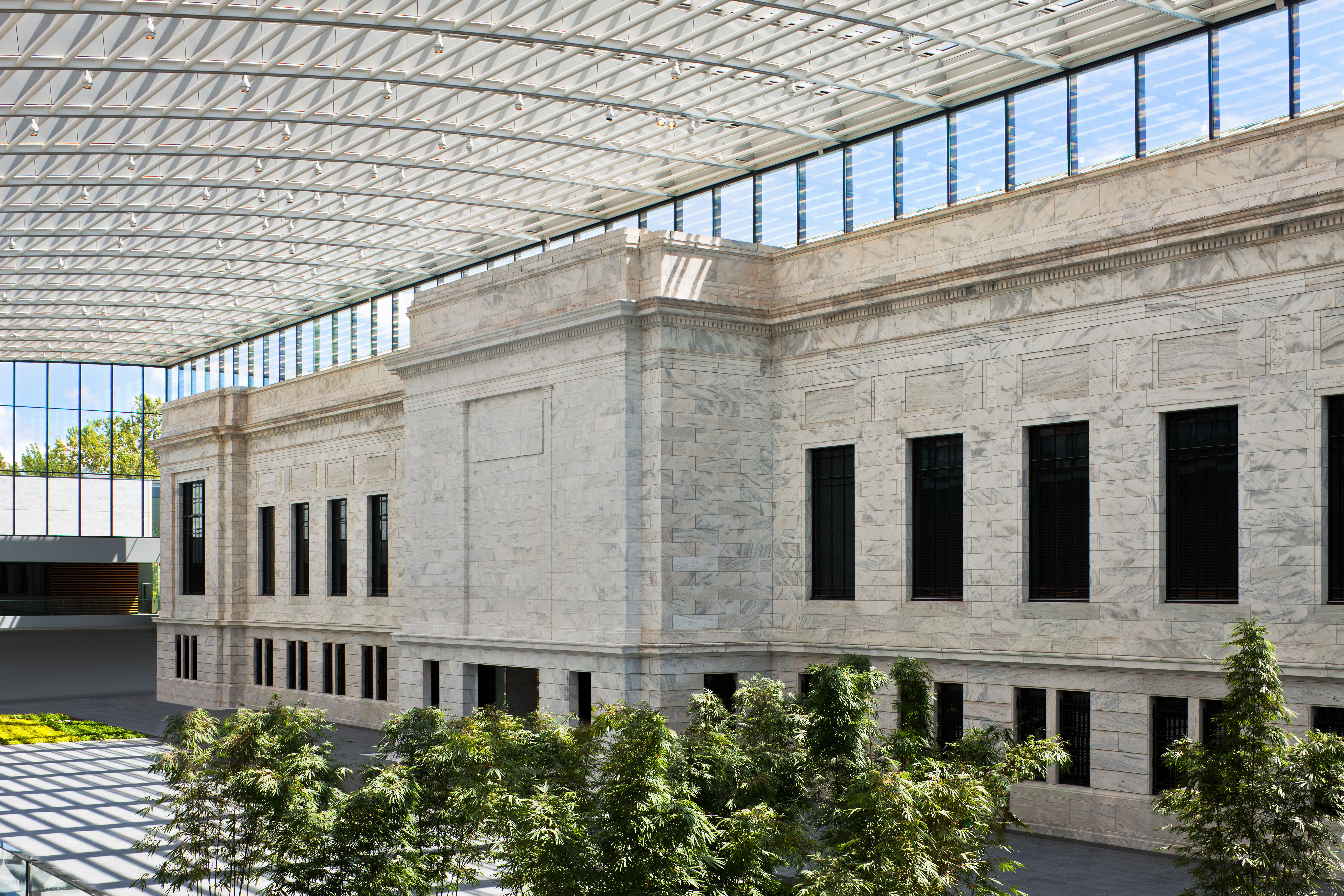
Glass bridges the two buildings together stylistically. Marble is the unifying factor with stripes of Newton Brown granite providing punch and movement along the East wing.
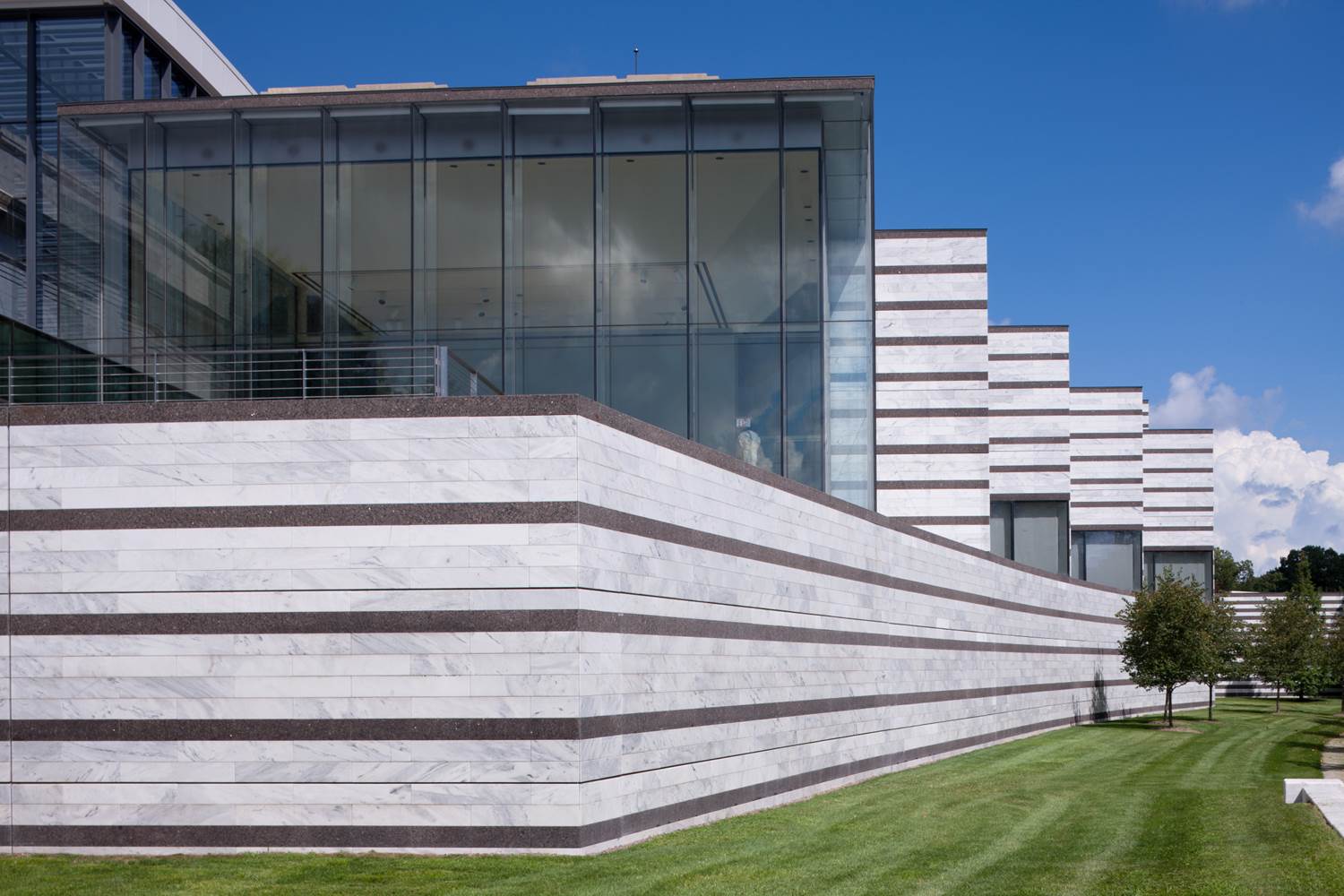
See a tour of the structures here in the Plain Dealer.
Polycor regularly supplies historic institutions with blocks of marble for exterior cladding to restore and expand structures. But sometimes new owners have an eye for style that elevates the already beautiful material.
At the Louis Vuitton building in NYC, originally constructed with Georgia marble from the same quarry, the fashion house partially clad the exterior in a curtain wall of frosted glass. The cascading glass provides a sleek and delicate contrast to the weighty building.

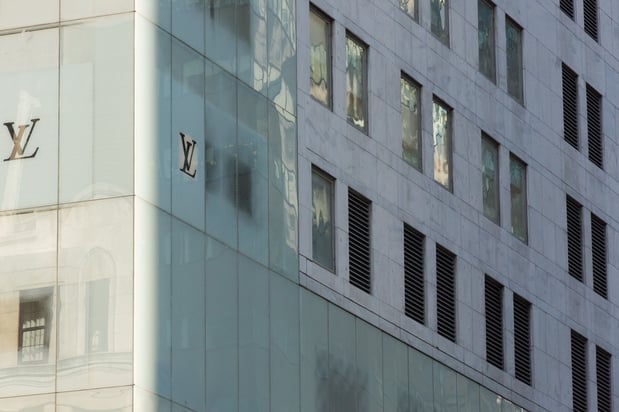
One of the shared challenges in cladding commercial exteriors, laying public walkways and restoring crumbling historic monuments is disparate elevations and thicknesses. Until recently architects and designers were limited to standard stone thicknesses of 2 or 3 centimeters leaving stone fabricators and construction managers facing the challenge of making seamless repairs to existing structures or smooth transitions between walkways.
To overcome this we developed a unique composite backing enabling us to slice down large slabs of granite and US marble to 1 cm thickness while increasing the stone's flexural strength by 10 times (and reducing it's weight by up to two-thirds). The result is a natural stone literally and figuratively more flexible for interior and exterior installations where weight or thickness is an issue. Download a spec sheet on 1 cm Thin Stone here.
This was the case in the floor installation at Baccarat's NYC flagship location where architects faced an uneven street to interior floor transition but couldn't dig down to make it level. Instead they chose large 1 cm thick granite slabs for an uninterrupted threshold. Inside the store designers also used the Thin Stone for crystal displays mixed with wood, glass and mirrored elements. The result is a juxtaposition of traditional and modern statements that reflects the brand's tradition and evolution.
To see more uses of glass and stone download our case study on Baccarat's high end retail installation in New York.
